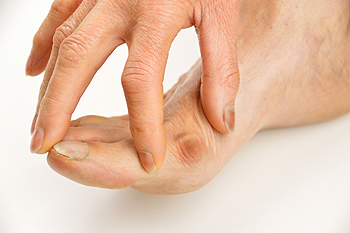
A corn is a small, hardened layer of skin that develops from excessive friction. Despite its small size, it can cause a considerable amount of discomfort. A corn can develop from wearing shoes that are too tight, and a common place to find a corn is on the pinky toe. They can also form on top of the toes with existing foot conditions such as hammer toe or bunions. Some people find that corns have developed between the toes, and these are referred to as soft corns. Mild relief may be found temporarily when a protective pad is worn over the corn. Additionally, it may be beneficial to change the type of shoes that are worn or to wear a different size. If corns are consistently developing, or if the pain level increases, it is suggested that you seek the counsel of a podiatrist who can provide you with correct treatment methods.
If you have any concerns regarding your feet and ankles, contact one of our podiatrists of Canonsburg Podiatry Associates. Our doctors will treat your foot and ankle needs.
Corns: What Are They? and How Do You Get Rid of Them?
Corns can be described as areas of the skin that have thickened to the point of becoming painful or irritating. They are often layers and layers of the skin that have become dry and rough, and are normally smaller than calluses.
Ways to Prevent Corns
There are many ways to get rid of painful corns such as wearing:
- Well-fitting socks
- Comfortable shoes that are not tight around your foot
- Shoes that offer support
Treating Corns
Treatment of corns involves removing the dead skin that has built up in the specific area of the foot. Consult with Our doctors to determine the best treatment option for your case of corns.
If you have any questions please feel free to contact our office located in Canonsburg and McMurray, PA . We offer the newest diagnostic and treatment technologies for all your foot and ankle needs.




